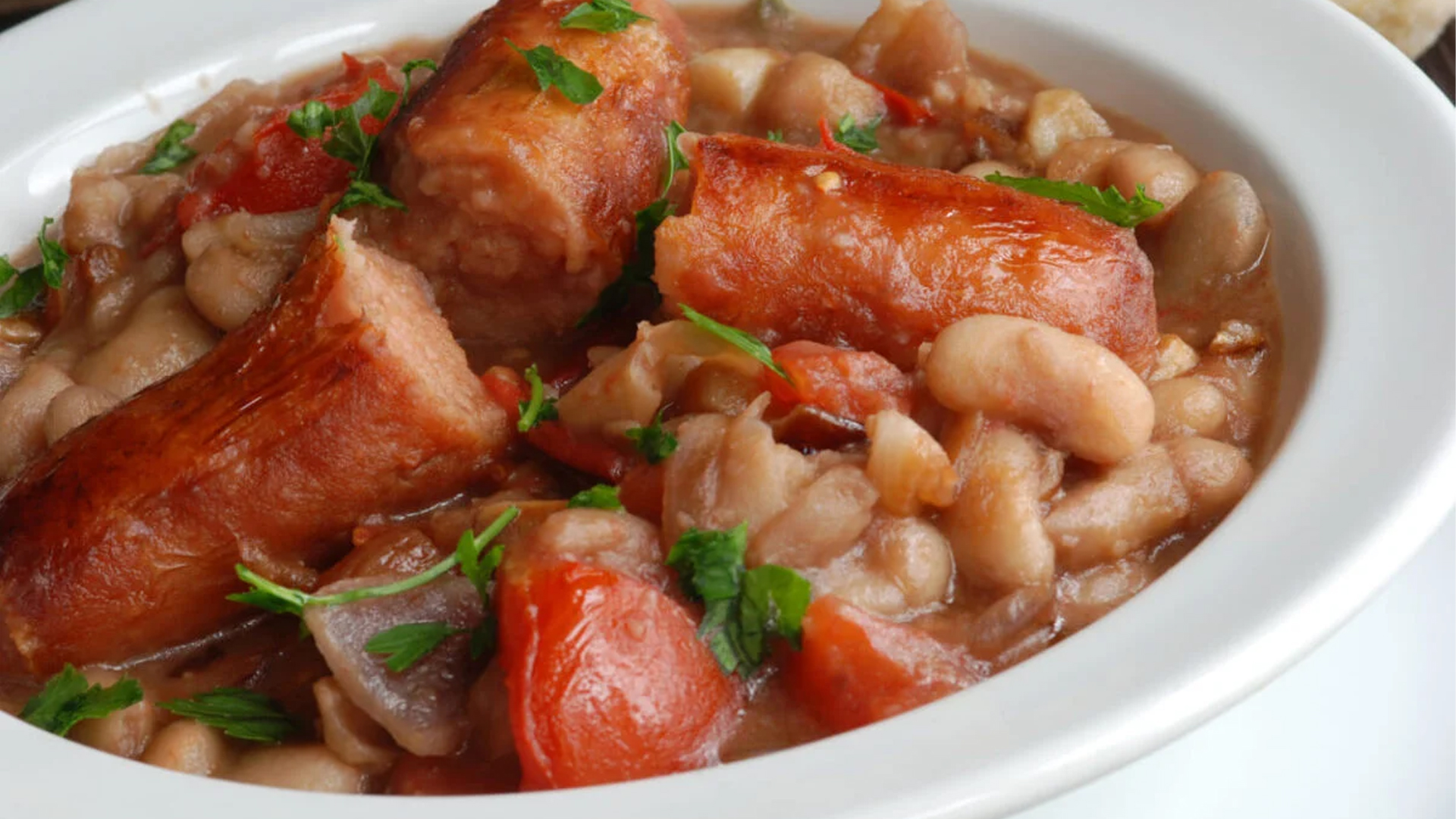While Carnevale is often associated with sweet desserts, fasting during the 6-week long period of Lent also means giving up savory foods, like meat. At times, fasting for Catholics meant giving up all meat products including butter and milk. Feasting during Carnevale is considered one last chance to eat those foods.
Catholics have long used the period between the Epiphany and the start of Lent to host feasts, parties, and parades. The traditions have ties to pagan rituals and feast days as well. One of the best-known celebrations is held in Venice where participants dress up in masks and elaborate costumes. Tourists visiting the lagoon city will often see the beautiful and delicate masks available for sale.
However, Venice is not the only city with festivals celebrating Carnevale. Throughout Italy's many regions, local traditions include parades, festivals, and of course, special foods. Here are 5 savory foods to feast on for Fat Tuesday:
Lasagna di Carnevale

(Photo Credit: tasteatlas.com)
In Naples, a popular savory dish is Lasagna di Carnevale, a special baked pasta dish celebrating the foods banned during Lent. According to Marlena Spieler, in "A Taste of Naples: Neapolitan Culture, Cuisine, and Cooking," this lasagna is filled with Neapolitan ragù, tiny meatballs and ricotta, and sometimes salami. If this sounds similar to the lasagna served by Italian American grandmothers, that's likely because in the early 20th century, Neapolitan immigrants typically cooked up foods associated with holidays, celebrating the bounty of wealth in the United States. The Lasagna di Carnevale has become something of a standard for lasagna in America, but in Naples it remains a dish associated with Carnevale.
Frittata di Carnevale

(Photo Credit: bottegadicalabria.it)
Historically, Calabrese performers in Carnevale parades were rewarded for their efforts with household pantry items including eggs, pasta, salami and cheese. When the parades ended, the performers would use the ingredients to make a frittata. The result is an omelet filled with pasta, salami and cheese that has come to be a symbol of Carnevale in Calabria. However, the dish is virtually unknown outside the region.
Favata
In the city of Mamoiada, Sardinia, Carnevale is marked by the Carnival of Mamoiada, beginning in mid-January. The festival features two mythic figures, the Mamuthones and the Issohadores, who parade through the streets. The Mamuthones wear black masks with sharp features and are dressed like goats and sheep with wooly skins. The Issohadores, in contrast, dress in smooth white masks and bright red uniforms. The Issohadores lead the Mamuthones through the streets, and local landowners traditionally feed the participants as a way of ensuring bountiful crops in the coming year. They serve favata, a stew made from fava beans and lard. Fava beans are also distributed in the hopes of a bountiful autumn harvest.
Fagioli Grassi

(Photo Credit: gazzettadelgusto.it)
In the northern city of Irvea, Piemonte, Fat Tuesday is celebrated with Europe's largest food fight called the Battle of the Oranges. During this three-day festival, more than 500,000 pounds of oranges are thrown at participants around the city. The modern festival dates back to the early 19th century with a recreation of a battle defending the town from invading soldiers during the Napoleonic wars. However, it also corresponds with Irvea's liberation from a tyrannical Duke in the medieval period. On the first day of the festival, it begins with a ritual eating of fagioli grassi, fat beans. The dish earned its name from the fatty pork, including pork skin, cooked in the dish. Large vats of beans are served to the participants in preparation for the daily battles. The practice of distributing beans as charity during Carnevale dates back to the medieval period when beans provided a valuable source of calories.
Farinella
This is a simple flour made from ground chickpeas and roasted barley. It's an ancient food and relatively unknown outside of Putignano, Puglia, a city near Bari. The flour played a special role in the city's history when it faced off with an invading army. The city residents, unlikely to defeat the marauders, decided to trick their enemy into believing the city was ravaged by plague. They covered their bodies with the farinella flour, appearing as though they were diseased. Fearing illness, the invading army spared the city. Since 1394, the city has hosted the festival during Carnevale honoring the unique flour. Celebrations begin as early as December and wrap up on Fat Tuesday with a parade. Farinella is also the name of a popular character featured in the parade, created in the 1950s. Putignano is known for its papier-mâché, and the parade is filled with figures. As for the flour, locals still use it in a variety of dishes served during the festival.
Ian MacAllen
Ian MacAllen is America Domani's Senior Correspondent and the author of Red Sauce: How Italian Food Became American. He is a writer, editor, and graphic designer living in Brooklyn. Connect with him at IanMacAllen.com or on Twitter @IanMacAllen.

